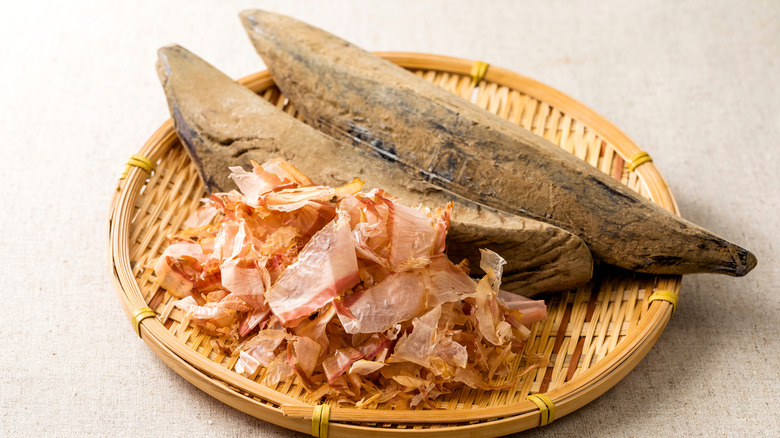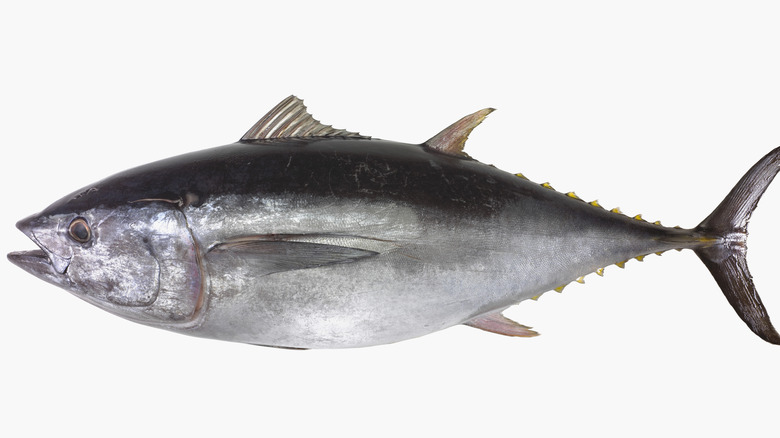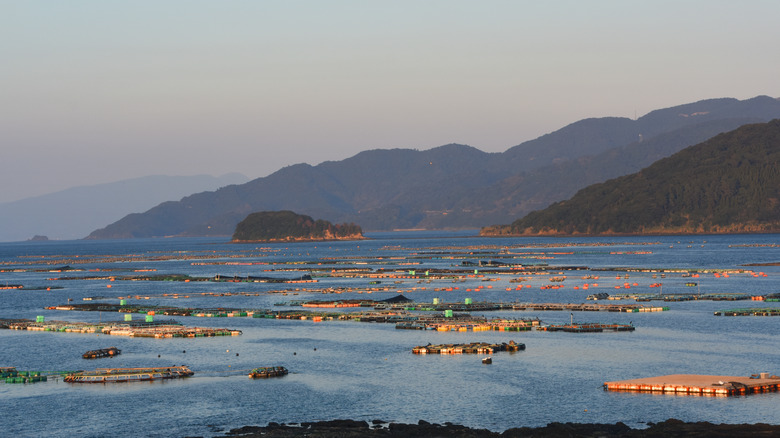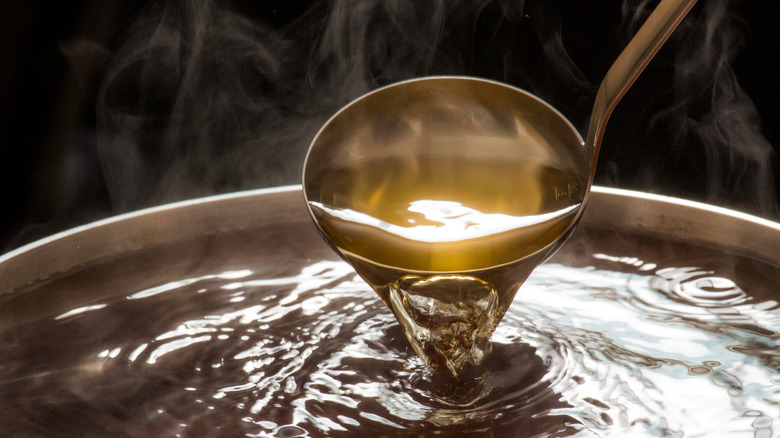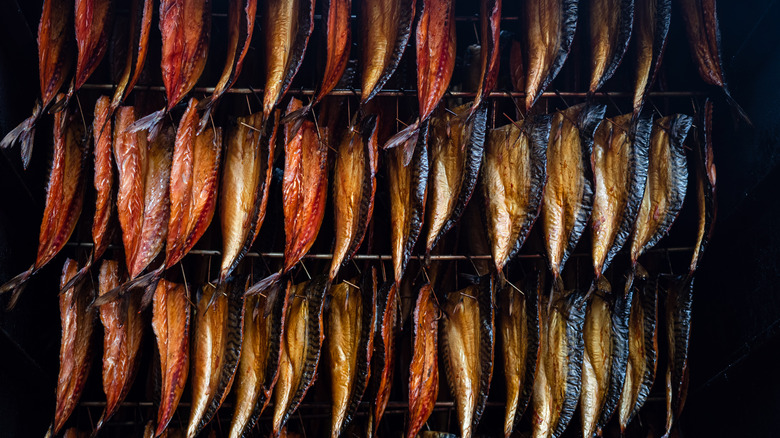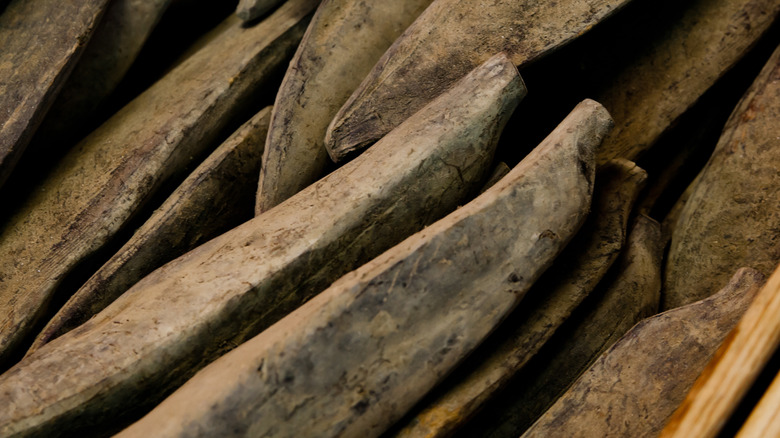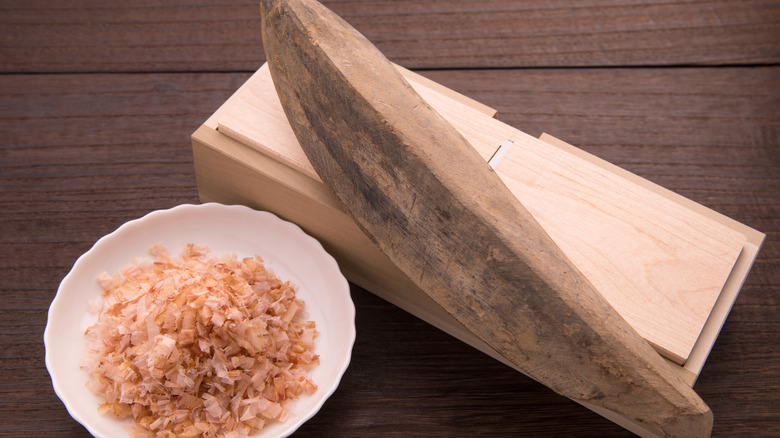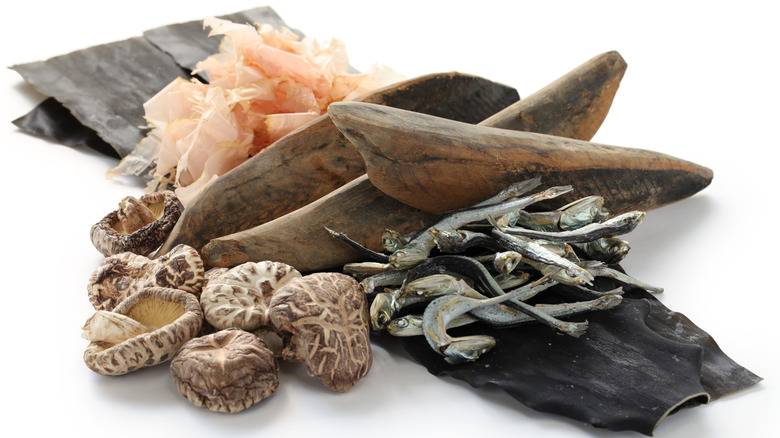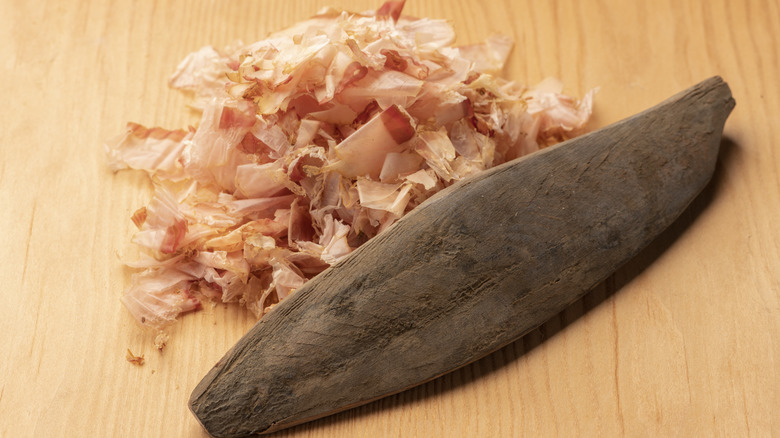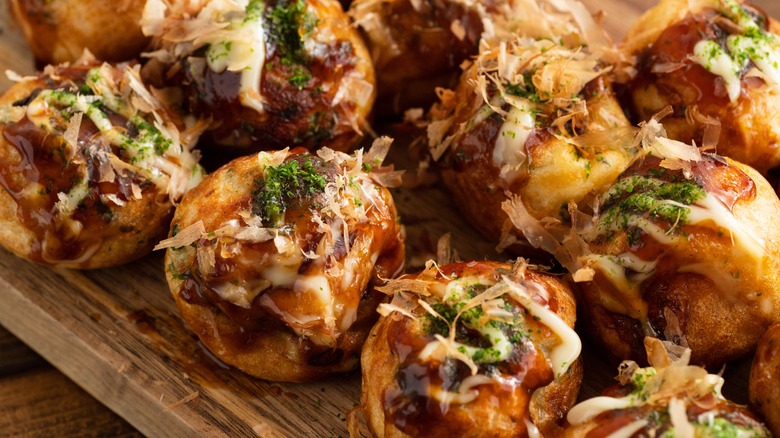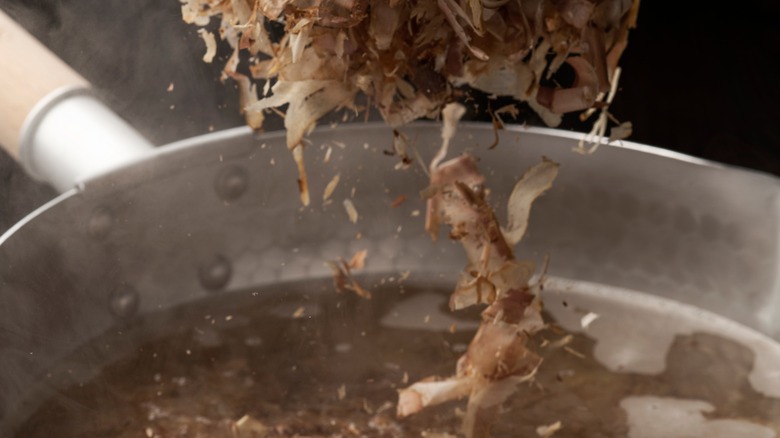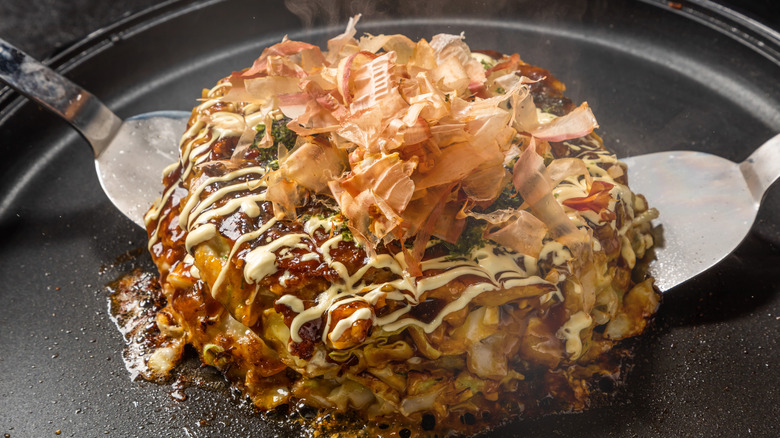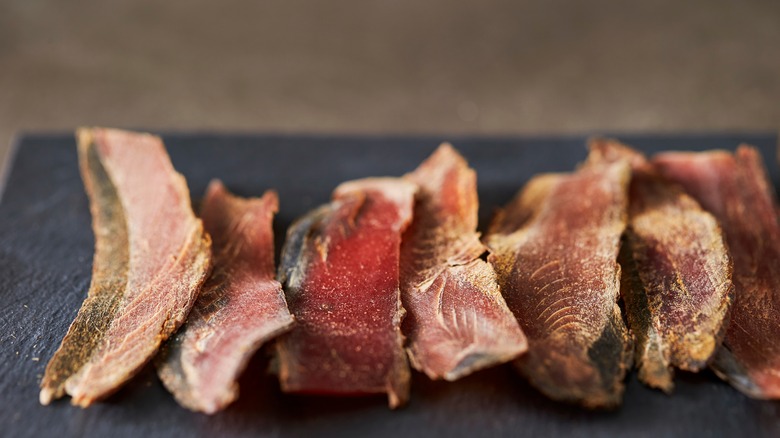Everything You Need To Know About Katsuobushi
Curing and fermenting has been a practice for centuries, and today still serves as a way to preserve many foods. If you look at other fermented foods like sauerkraut, miso, sourdough bread, and fish sauce, you will see that what they all have in common is a bacteria doing much of the work to break down enzymes and make these foods more flavorful than when they started. Fermenting meat and seafood involves a very similar process and you can taste the results in products like saucisson, chorizo, and shrimp paste. All of these delicacies have a deeply savory flavor that is a delight for our taste buds.
Now, let's talk about fish; katsuobushi to be exact. A piece of fish that has been dried and then fermented until it is rock hard, smooth, and ready for shaving. The word katsuobushi refers to either a block of whole fish that has gone through the long process of smoking, drying, and fermenting, or the shavings that come from these blocks. The shavings are incredibly flavorful and makeup one of the staple base components in Japanese cuisine, dashi. Katsuobushi makes some of the best dashi available, and thanks to its wonderful flavor, katsuobushi dashi makes Japanese food what it is. If you are curious about the fascinating process of making katsuobushi, and want to know more, then we're about to break down the ancient food.
Katsuobushi is made from skipjack tuna
Katsuobushi (which, unfortunately, has nothing to do with cats) is an essential Japanese condiment and flavor bomb. You may be familiar with katsuobushi in its shavings form, but it is in fact a type of fish that has gone through a long process of fermentation, smoking, and drying to give it the rich flavor that we all love.
So, what type of fish exactly? Katsuobushi is made from bonito fish or skipjack tuna. If you are a seafood fanatic, perhaps you have heard about these species and have been confused about what the differences are between them. Both bonito and skipjack tuna are part of the scombrinae marine animal family, which encompasses many muscular, fast swimmers such as tunas, mackerel, and bonitos. But, while bonito refers to a more general variety of fish, skipjack tuna is a specific species that can weigh around 40 pounds and grow to up to three feet in length.
On top of that, skipjack can live to be 10 years old and are one of the least endangered tuna species, making them a good conscious seafood choice. Skipjack tuna frequent the Atlantic, Indian, and Pacific oceans, specifically the tropical areas. This explains why they have, throughout history, played a large role in Japanese cuisine.
Japan produces most of the world's katsuobushi
Now that we know that katsuobushi is made from skipjack tuna and bonito, it makes sense that it was created somewhere temperate where skipjack tuna and bonito are abundant. That brings us to the south of Japan in the Kagoshima prefecture where katsuobushi has been traditionally produced for generations.
Kagoshima is the capital of the Kagoshima prefecture and one of the most southern cities in Japan. It is home to many cultural icons like the famous volcano, Sakurajima which rises from the bay of Kagoshima, creating an astounding view. Kagoshima also is very temperate and boasts palm tree-lined streets and access to smaller islands off of the coast like Yakushima.
If you go a little bit further south in the prefecture, you will find yourself in the cities of Makurazaki and Ibusuki, where an estimated 70 percent of Japan's katsuobushi is produced, according to Visit Kyushu. While much of Japan and the world's katsuobushi today is mass-produced and available already shaved, in this southern part of Kagoshima, you will also find many traditional producers who are taking the time to create a product that is artisanal and of premium quality.
The first step is simmering
Making any type of katsuobushi is labor-intensive and time-consuming and can take anywhere from a couple of weeks to a couple of months. To start with, there are two main grades of katsuobushi, the first being arabushi and the other being honkarebushi. There are other categories of katsuobushi made from the belly or back of a fish and others made from different types of tuna.
To go over the general two types of katsuobushi, let's start with arabushi, the title given to standard katsuobushi aged for several weeks and doesn't go through the fermentation phase. On the other hand, honkarebushi is the highest quality katsuobushi available, and it is often aged for around six months as well as fermented. The process of making katsuobushi is clearly long, regardless of which path you choose. So, where do you begin?
The first step in making katsuobushi is simmering the fish. But, before even this step, the whole fish must be broken down, gutted, and filleted into the desired shapes and sizes. Once this is done, real beauty can begin. The fillets are lowed into large vats of almost boiling water, and left to poach for 60 to 90 minutes until they are tender and the bones are easily removable.
Katsuobushi is smoked
Once the in-process katsuobushi is poached, the bones are removed and most of the skin is peeled away. The pieces are then formed into the desired torpedo shapes using a tuna paste, which fills in any gaps in each fillet and prevents the final mold from harming the surface of the fish. The smoking step is traditionally done using oak wood but can be completed with other types of wood.
The smoking phase is called baikan, and it can vary depending on the quality and the producer. Some producers choose to smoke the fish repeatedly in hour increments, around 10 to 15 times, to allow the smoked flavor to penetrate the fish. The katsuobushi is then left to dry in the sun and dehydrate a little bit further until the water percentage is around 28%.
However, other producers have much more intricate smoking methods that include days of smoking at different temperatures. This is often a delicate formula depending on the company. It typically includes some combination of smoking the fish close to the fire for a couple of days, and away from the fire inside a smokehouse for about a week or more. As with any artisanal product, making katsuobushi is very producer dependent and can be treated in a variety of ways to make it unique and delicious.
Fermenting katsuobushi is the last step
The last step of the katsuobushi-making process is the fermentation phase, called kabitsuke. Fermentation is a process of controlled bacteria growth where enzymes begin to break down food and thus change its flavor. You can also thank fermentation for many of your favorite bubbly drinks like ayran and kombucha, and savory pastes like miso and gochujang. Fermentation gives katsuobushi deep flavor of umami as well.
Another distinction between arabushi and honkarebushi is the fermentation process: arabushi does not get fermented, while honkarebushi does. The fermentation period is catalyzed by a layer of a specific Japanese mold named koji that coats the smoked fillets. The pieces are then left to ferment in a large tub for around two weeks, brought out to be dusted off and sun-dried, and then returned to the molded tub. This process is repeated for multiple cycles overfour to six months. Once the katsuobushi is finished its water content is under 20%, meaning that it is incredibly hard and solid.
Making katsuobushi is an ancient process
After katsuobushi is finally finished, it has aged many months and completely transformed. This intricate process served as an invaluable way to preserve precious fish in ancient times when it was impossible to chill fresh foods. Furthermore, katsuobushi is an ingenious way to transform the natural flavor of the bonito or skipjack tuna into something even richer and more delicious.
Drying fish for preservation that has been practiced for centuries, but the intricate process of making katsuobushi is a relatively more recent discovery. While it is hard to know exactly when many traditional processes like this start, the origins of katsuobushi making are actually somewhat documented, or at least widely narrated as follows. In 1674, a shipwrecked fisher named Kishu smoked dried fish to increase the flavor and, thus, arabushi was born (via Tokyo Foundation). About a decade later, it is believed that a fish merchant discovered some old arabushi that had been forgotten about in his warehouse, which had begun to ferment, but rather than being foul was even more flavorful. This was the beginning of honkarebushi.
Katsuobushi has high levels of inosinate
Katsuobushi has an incredible umami flavor. But, beyond that, it has high levels of something called inosinate. You may have heard of umami-rich monosodium glutamate, also known as MSG, which is responsible for bringing layers of umami to many of our favorite sauces and dishes. But, what may surprise you is that MSG is not the only substance that produces an umami taste. Inosinate, which is officially known as disodium inosinate, is created through the fermentation of sugar and yeast and is also to thank for many beloved umami foods.
The inosinate in katsuobushi gives it the depth of flavor and distinctly savory taste that makes katsuobushi a beloved ingredient. And katsuobushi gets inosinate from its lengthy production process. Through both the baikan smoking phase and kabitsuke fermentation phase, the levels of inosinate in katsuobushi skyrockets. Especially during the kabitsuke phase, when the mold begins to ferment the fish and thus produce the inosinate substance, the irresistible umami flavor of katsuobushi is born.
You can find katsuobushi as shavings
It is important to note that you may have a difficult time finding a solid chunk of katsuobushi in the store. What is more common is finding katsuobushi in shaving form, already sliced into thin wisps. These delicate, almost see-through pieces of fish are flavorful and will perfume your kitchen with their rich smell the moment you open the bag.
If you do go through the long and intense process of making your own katsuobushi, or if you somehow find yourself with a whole piece of dried fish, then it is essential to treat it properly. The best way to use katsuobushi is in the form of shavings because this allows the katsuobushi flavor to shine through without being overpowering. Also, considering that by the time katsuobushi is done drying and fermenting, it is often incredibly hard. It is good to eat in the form of shavings so as to not hurt your teeth.
To shave your own katsuobushi you first need a kezuriki, a shaver that is specifically made to create thin shavings and somewhat resembles a mandolin, except that the blade is jutting up from its wooden block rather than being set above on another plane. Using a kezuriki and your own katsuobushi block will result in high-quality, extra-flavorful katsuobushi. If you have the opportunity to try this out, don't pass it by!
Use Katsuobushi as a multipurpose seasoning
This fantastic, fluffy creation may look unassuming and simple in the bag, but once you open up a katsuobushi package you will know immediately why it is a beloved seasoning and garnish. Katsuobushi is the perfect topping for classic favorites like okonomiyaki and staple street foods like takoyaki. Takoyaki are bite-sized octopus balls that are made very rapidly in half-circle pans and then drizzled with sauce, mayonnaise, and katsuobushi. You can find people all over Japan eating takoyaki as a snack, and the smell of katsuobushi and cooking octopus will make your nose dance. Katsuobushi is also delicious as a topping for rice, eggs, vegetables, soups, and meats. Katsuobushi's versatility makes it a must-have pantry item and a flavorful addition to almost all of your meals.
Katsuobushi is an essential Japanese ingredient and condiment. But that does not mean that it needs to be restricted to only Japanese food. These flakey pieces of fish will bring a savory seafood flavor to many of your dishes and broths. Additionally, thanks to its long smoking time, katsuobushi is incredibly smoky, adding that wonderful layer of smokiness to many foods.
Dashi is made from katsuobushi
The base of Japanese cuisine comes from dashi, and dashi comes from katsuobushi. Or rather, dashi is made from katsuobushi. Dashi is Japanese soup stock and is used to flavor many staple dishes such as miso soup, chawanmushi, oden, and sukiyaki. Without dashi, many Japanese dishes would not have the same comforting, and satisfying taste that makes us feel satisfied and happy.
You can make dashi in a variety of ways. Another popular addition is kombu, but to get the signature smokiness and savoriness that makes good dashi, you must use katsuobushi. To make it, you can simply simmer katsuobushi in water for a short period of time until the flavor has been released into the water. This creates a very flavorful, unsalted broth that is applicable to many dishes.
Arabushi, honkarebushi, and other types of katsuobushi all create slightly different dashis. Also, the part of the fish that the katsuobushi was made from can influence the final dashi flavor. For example, magurobushi, also known as bluefin tuna, katsuobushi creates an incredibly clear dashi that is bright in flavor.
Fermented fish is delicious on okonomiyaki
Katsuobushi is delicious as a topping on many foods and is a huge component in many Japanese furikake flavors. However, the ultimate marriage is between katsuobushi and okonomiyaki. If you have not had okonomiyaki, they are fairly easy to find in Japanese restaurants and you can also make them at home. If you do embark on the home-cooking journey, make sure to acquire all of the necessary toppings to make this dish complete. So, what are okonomiyaki?
Okonomiyaki are savory cabbage pancakes that come in many regional varieties, with the two most famous hailing from Osaka and Hiroshima. Osaka okonomiyaki are made with all of the ingredients mixed together beforehand and then added to the griddle to cook as one large pancake. On the other hand, Hiroshima okonomiyaki are famously constructed on the griddle with the batter, cabbage, and other fillings, such as squid, noodles, mochi, pork, kimchi, or pickles layered on before the whole thing is flipped.
Whichever style of okonomiyaki you prefer, or can find, one essential topping for these delicious pancakes is katsuobushi. The okonomiyaki batter is already made with dashi, but adding katsuobushi to the top adds an even more wonderfully umami and fishy depth to each bite.
Katsuobushi is high in protein
Besides being delicious and a beautiful art form, katsuobushi is also great for your body. These little flakes of fish are exactly what you need to feel strong and vibrant, and they can be easily incorporated into your diet in may ways.
Partly because tuna is already high in protein, and partly because during the dehydration phase and lengthy drying the whole block of fish concentrates, katsuobushi is incredibly high in protein. In just 100 grams of katsuobushi, there is 162% of your daily recommended protein intake (via Nutritionix), summing up to 81 grams of protein. That means that the majority of katsuobushi is protein deliciousness.
On top of its high protein content, skipjack tuna alone is very healthy for you. This fish has high levels of manganese, B vitamins, potassium, and, of course, protein (via Animal Spot). This makes skipjack tuna, and katsuobushi, a great option for people looking to introduce more protein into their diets and boost their overall nutrient intake.
